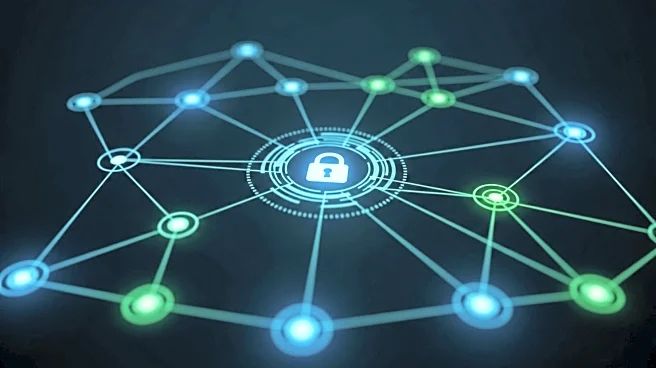What's Happening?
A joint advisory from the U.S., U.K., and over 15 allies has been released, detailing Chinese state-sponsored cyber intrusions linked to the 'Salt Typhoon' cluster. These intrusions have targeted telecom and backbone networks since at least 2021. The advisory highlights the use of edge-device and router-centric tradecraft, including traffic mirroring and tunneling, without exploiting zero-day vulnerabilities. Instead, known vulnerabilities in widely deployed network equipment have been chained together. The FBI reports that Salt Typhoon is largely contained within U.S. telecom networks, but warns that access could be pivoted to destructive actions. The advisory also notes that intrusions have reached 'lawful intercept' systems at U.S. providers, which are designed to process court-authorized surveillance.
Why It's Important?
The significance of these intrusions lies in their potential impact on U.S. national security and civil liberties. By targeting telecom networks, the intrusions could compromise sensitive data and surveillance systems, posing a threat to counterintelligence operations. The advisory underscores the growing cyber threat from China, as identified in the U.S. intelligence community's 2025 Annual Threat Assessment. The containment of Salt Typhoon within U.S. networks does not equate to neutralization, as the existing footholds could be used for destructive purposes in a crisis. This situation highlights the need for robust cybersecurity measures and international cooperation to address state-sponsored cyber threats.
What's Next?
The U.S. has moved to sanction Chinese firms and individuals linked to Salt Typhoon, reflecting a strategy to disrupt the contractor ecosystem supporting these operations. The advisory suggests that more sanctions and naming of PRC firms involved in cyber intrusions are expected. Additionally, the advisory emphasizes the importance of treating network devices as endpoints, patching known vulnerabilities, and closing 'no-logs' gaps to prevent future intrusions. The continued pre-positioning in critical infrastructure by Chinese actors remains a central concern for U.S. threat framing.
Beyond the Headlines
The advisory reveals a structural shift in Chinese cyber operations, with the Ministry of State Security (MSS) leading more intrusions than the People's Liberation Army (PLA). This shift is supported by a network of private contractors, as exposed by the i-SOON leaks. The MSS's approach focuses on persistent visibility in communications and critical infrastructure, with an eye to potential disruption. This strategy contrasts with other state actors like Russia, Iran, and North Korea, who prioritize different objectives such as visible disruption or revenue generation.











